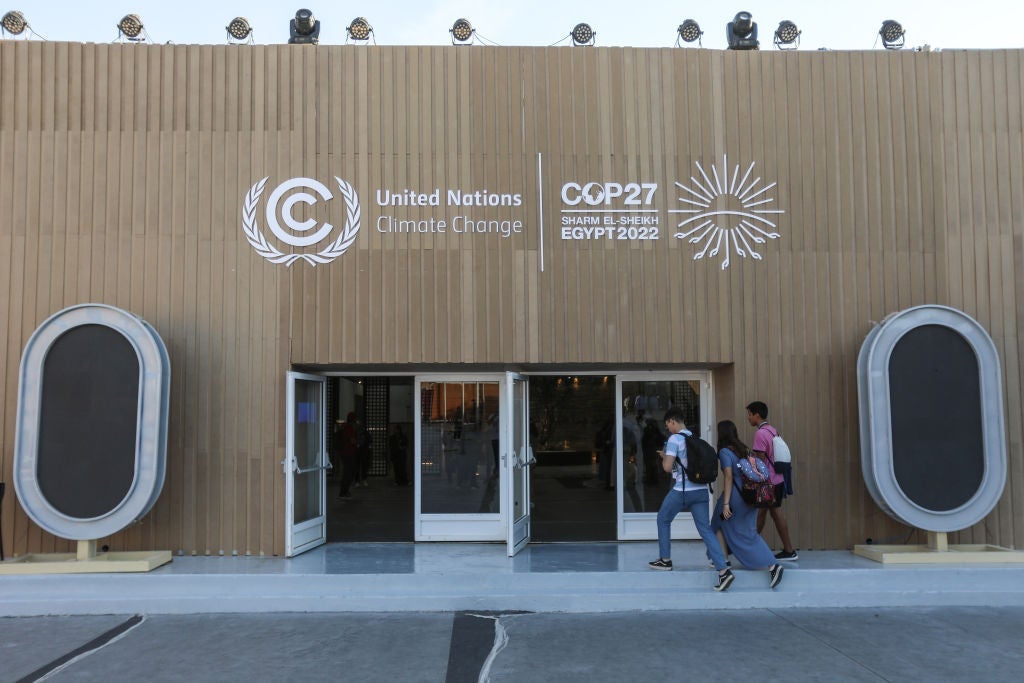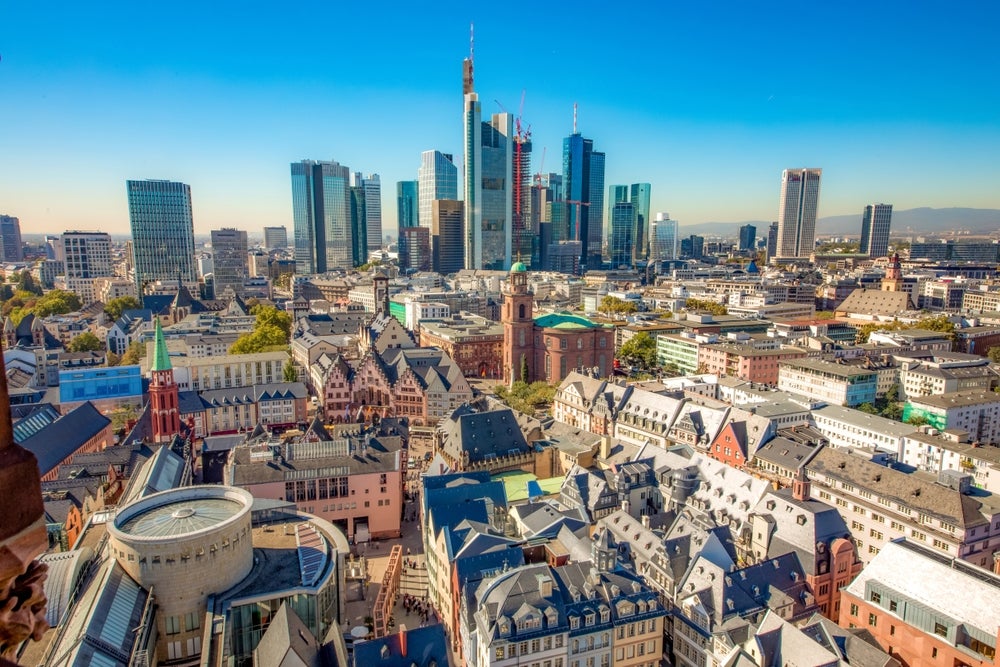
The beginning of COP27 in Sharm El Sheikh, Egypt, means a year has passed since the world agreed to “keep 1.5°C alive” at the COP26 UN climate conference in Glasgow. Over the course of the intervening year, however, that tentative note of collective optimism – and Covid-19’s carbon emissions reductions – have been overtaken by geopolitics and a global energy crisis.
Russia’s war in Ukraine has resurrected fault lines in international relations not seen since the Cold War, while restrictions on Russian oil and gas have made ‘energy security‘, rather than climate policy, the political priority. Nevertheless, events ranging from record floods in Pakistan to record droughts in China continue to remind us that the climate problem is worsening.
Hope is not lost. Data reveals the transition to clean energy continues at a record pace, partly out of this new ambition for energy security. Some 257GW of renewable electricity capacity was installed in 2021, according to the International Renewable Energy Agency (IRENA). In China, the five-year plan for 2021–25 will add 874GW of solar and wind capacity to the grid – equivalent to the entire electrical network of Europe. The Inflation Reduction Act in the US means the country’s wind power capacity should double, and solar power capacity quadruple, by 2030.
To mark the opening of COP27, Energy Monitor tracked the latest carbon emissions data: the fundamental metric that determines our progress in addressing climate change. In doing so, we can see just how far the world is from reaching the ambition laid out in the 2015 Paris Agreement: net-zero emissions by mid-century, which is what the Intergovernmental Panel on Climate Change (IPCC) says is required for a good chance of keeping global warming to the “safe” limit of 1.5°C.
COP27 carbon emissions: up and up
Headline global emissions data remains bleak. The world’s carbon emissions rose by more than 60% between 1990 and 2021, according to data provided by the climate scientists behind the Global Carbon Project initiative. This comes despite scientists first predicting the global warming phenomenon more than a century ago and UN climate conferences now taking place for some 30 years.
Overall emissions continue to rise, even as the IPCC has warned that emissions must fall by 45% from 2010 levels by 2030 for the world to have a chance of limiting the global temperature rise to 1.5°C.
How well do you really know your competitors?
Access the most comprehensive Company Profiles on the market, powered by GlobalData. Save hours of research. Gain competitive edge.

Thank you!
Your download email will arrive shortly
Not ready to buy yet? Download a free sample
We are confident about the unique quality of our Company Profiles. However, we want you to make the most beneficial decision for your business, so we offer a free sample that you can download by submitting the below form
By GlobalDataCountry-level emissions data is a story of development inequality. The major industrial hubs in Asia and the West produce the most overall emissions. Meanwhile, high-consumption lifestyles in the West, as well as fossil fuel-powered economies in the Middle East, give countries in those regions the greatest per capita emissions.
At the other end of the spectrum, Africa contains 17% of the world’s population but produces only around 4% of the world’s emissions, with around 80% of those coming from just six countries: Algeria, Egypt, Libya, Morocco, Nigeria and South Africa. A major challenge for negotiators at COP27 will be to provide greater financial and technical support for African nations to be able to develop without producing the same volume of emissions that industrialised countries have produced.
Reasons to be hopeful
There are, however, grounds for optimism. Many of the world’s most developed countries now consistently record year-on-year declines in emissions as their economies have transitioned away from heavy industry and they have decarbonised their electricity grids. The UK, for example, has seen emissions fall by 45% since 1990, with around 45% of electricity now coming from renewable power sources.
Overall, since 1990, 69 countries and territories have seen their emissions fall versus 150 that have seen emissions rise. Major industrial players including the US, Germany and Italy are among the countries that have seen declining emissions.
It is also good news that countries comprising 91% of global GDP have pledged to reach net zero by around mid-century, including all of the world’s biggest emitters. Most of these pledges only occurred in the past two years, so while their impact on real-world emissions may be limited for now, this could soon change, predicts Henning Gloystein from the risk consultancy the Eurasia Group.
[Keep up with Energy Monitor: Subscribe to our weekly newsletter]
"Net zero moved from being a rich country fad to a global trend in the second half of 2021,” says Gloystein. “There is a lot of legitimate criticism that net zero isn’t enough to drive change – but even if it isn’t, I think we will soon begin to see economies change much more rapidly as they chart their decarbonisation pathways.”
Time for policy behind pledges
However, the hard truth is that real-world policy remains at loggerheads with these long-term pledges. Just 6% of all the new pledges made at COP26 are adequately supported by both policies and interim targets, found analysis of climate policy by the think tank Climate Action Tracker.
At the end of October, the annual UN Emissions Gap report found that current policies would mean global warming of around 2.5°C – a devastating prospect.
When climate progress is viewed through an energy transition lens, the news is similarly bad. Even as renewables continue to grow apace, the general trend since the Paris Agreement remains negative among the world’s wealthiest nations.
According to data from BP’s Statistical Review of World Energy, between 2015 and 2019, G20 consumption of renewable energy increased by 9.3 exajoules (EJ), but annual consumption of energy from fossil fuels increased by 14EJ. This latter figure is an amount greater than the entire annual primary energy consumption of Brazil.
The tide must be turned, and fast. The Institute for European Environmental Policy recently found that emissions must now fall 3.4% year-on-year up to 2030 for there to be a chance of global warming remaining “well below 2°C”, which is what countries are aiming for under the Paris Agreement. Unfortunately, the world is on course for a 1% rise in emissions in 2022, shows the latest forecast from the International Energy Agency. Urgent action to reduce carbon emissions is required at COP27.







